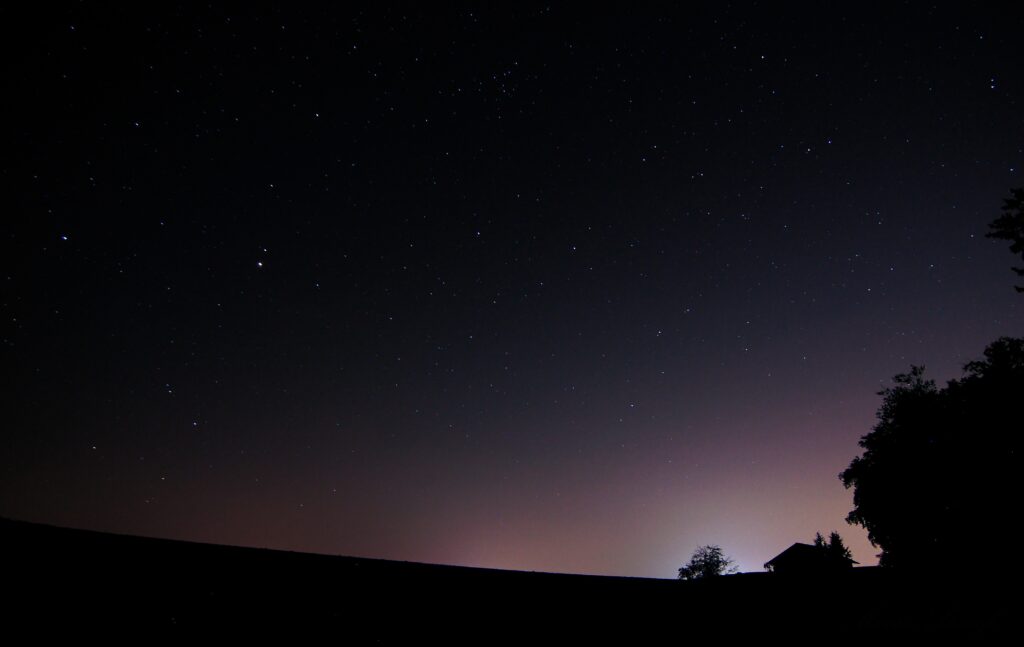Learn more about the Slowlight initiative
Have you ever heard of light pollution? Do you know the risks associated with it? When was the last time you saw the stars clearly? These are just a few questions that highlight the consequences and experiences humans face daily due to the excessive or misdirected use of artificial light during the night throughout the entire planet.
Data from 2019 identified Spain as the EU country with the highest expenditure on public lighting and among the top countries with the highest light pollution index.
It may not come as a surprise then that in 2021, the “Slowlight Initiative”, promoted by Coque Alcázar, the representative of the Spanish lighting committee in Galicia, and Raquel Valiño, gained more visibility, a project that had already been in development for a few years in A Coruña.
“At Slowlight, we advocate for responsible light use and promote the essential basic principles for a new culture of lighting , a shift towards global sustainability that allows us to reclaim the night in our cities while respecting the environment.”
Is public lighting the main culprit of night-time sky pollution?
Considering the volume and number of light sources, one might argue yes. However, various other sources, such as commercial, advertising and private lighting, often fail to comply with existing regulations on outdoor lighting energy efficiency. Even residential lighting contributes to the increasing light pollution in cities, a source that is often overlooked by the public.
While public administrations prioritise sustainability, climate change action and energy efficiency in urban development,sustainability policies often do not include efficient action measures to combat light pollution.
Is society aware of the serious problem posed by light pollution?
Not nearly enough. There is a significant lack of awareness among the public regarding appropriate lighting, a concept that organisations like the Professional Association of Lighting Designers (APDI), refer to as “the culture of good lighting”.
In May, on the occasion of the International Day of Light, various nocturnal walks were organised in numerous Spanish cities. Our head of technical promotion, Javier Navarro, a technical consulting partner at APDI and a collaborator of the Slowlight initiative in the Valencian community, was one of the guides for the citizens of Valencia who participated in this pioneering initiative. These awareness walks focused on the impact of urban lighting on landscape, identity, heritage, security, environment and their relevance to citizens.
It became evident during these events that the general public lacks knowledge about urban lighting, both public and private, leading to a clear conclusion: “There is an excess of lighting” or, more precisely, “poorly planned lighting.”
What problems does light pollution cause for people, animals and the planet?
As mentioned earlier, night-time lighting has robbed us of the darkness and the ability to behold the night sky. In many urban centres, and even in rural areas, the stars and the Milky Way are scarcely visible.
However, the consequences go beyond that, since light pollution disrupts the biological clock in all living beings. In humans, it affects the production of melatonin, the hormone responsible for sleep. In fact, there are already studies on the effects of excessive artificial light on sleep patterns in various Spanish hospitals. Moreover, excessive night-time lighting leads to fatigue, nervousness and depression, and is associated with an increased risk of pathologies such as diabetes, obesity and cancer.
This impact extends to all living beings, causing diseases in animals, altering bird migrations and disturbing tree cycles.
As astrophysicist Alejandro Sánchez de Miguel points out, “Without realising it, we are leaving 50 percent of the planet continuously unprotected — the part that is in darkness. The essence of ecosystems during the night is based on that darkness. Light pollution affects a much larger percentage of species, not just 50 percent, as there is much more nocturnal activity than diurnal. Therefore, we are talking about something very critical“. Source: National Geographic
Imagen: Pixabay


